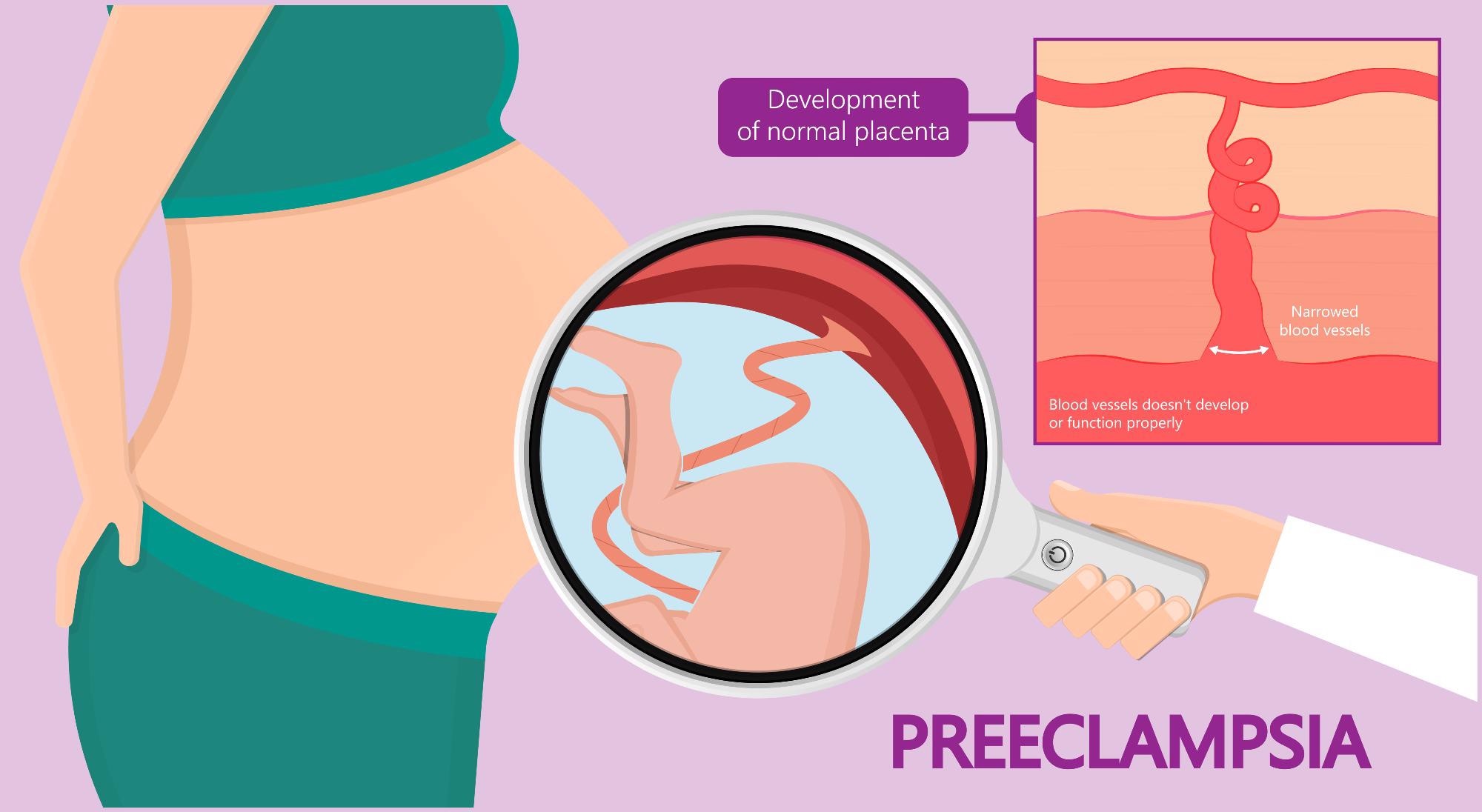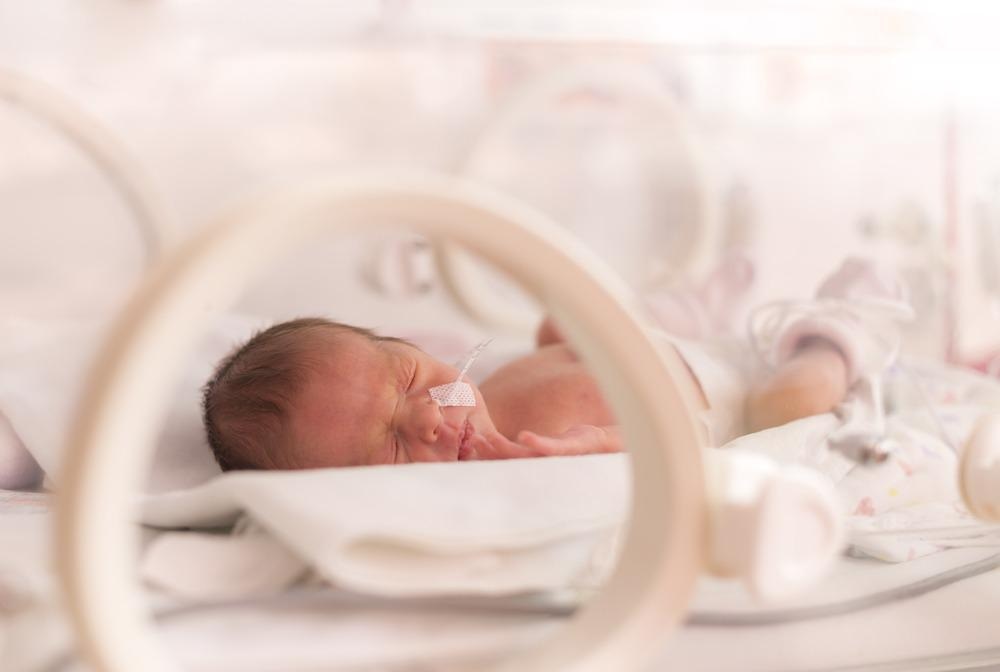Pregnancy is typically a time of great joy and hope, but also of fear, because of the known occurrence of complications, often unexpected. These may affect both the mother and the fetus. Some complications arise because of pre-existing medical conditions.
It is the risk of such complications that prompts calls for pregnant women to receive routine antenatal health care, so that these conditions may be screened for and prevented or treated as early as possible. Any pregnant woman who sees a healthcare provider should tell the latter about any health issues and medications, or medical procedures, both in the past and in the present.
Pregnancy complications may range from mild to life-threatening, and may be either due to or aggravated by pregnancy. Of course, any medical condition predating pregnancy, such as asthma or heart disease, may be exacerbated by pregnancy-related demands on the body.

Image Credit: Antonio Guillem/Shutterstock.com
Medical Complications
Some of the common medical conditions which may complicate pregnancy include:
Hyperemesis Gravidarum
Hyperemesis gravidarum refers to vomiting that is excessive and persistent, preventing adequate nutrition and hydration by mouth.
Hypertensive Disorders
Hypertensive disorders may originate before or during pregnancy. If already existing at the time of conception, they may require to be carefully controlled and monitored throughout. When the blood pressure increases beyond normal limits for the first time during pregnancy, it is termed gestational hypertension.
In such cases, it arises in the second half of pregnancy and resolves after childbirth. Maternal complications such as pre-eclampsia, placental abruption, and gestational diabetes, are all more common at this time, as are low-birth-weight babies, preterm birth, and infant death.
Diabetes
Gestational diabetes arises de novo during pregnancy and can harm the mother and the baby. Pregnant women may also have type 1 or type 2 diabetes, from before conception, Asian and Hispanic women in the USA are at a higher risk of gestational diabetes, while Hispanic and Black women have higher rates of type 1 and type 2 diabetes.
Diabetes during pregnancy is linked to a higher risk of congenital anomalies, stillbirth, and preterm birth, as well as macrosomia. The increased birth weight often leads to difficult vaginal delivery or Cesarean delivery as well as neonatal metabolic abnormalities.
Pre-eclampsia
Formerly called toxemia of pregnancy, this condition is peculiar to pregnancy, more commonly the first, and those with pre-existing hypertension, diabetes, or kidney disease. It is also more common in teenage and older (>40 years) mothers, those who are obese, and with multiple pregnancies.
It refers to the appearance of high blood pressure with protein in the urine, with or without headache, reduced urine output, blurring of vision, and puffiness around the ankles due to fluid retention. The most dreaded complication is eclampsia, which can cause seizures, a coma, and maternal death. HELLP syndrome (including Hemolytic anemia, Elevated Liver enzymes, and a Low Platelet count), is another life-threatening complication of hypertension in pregnancy.

Image Credit: rumruay/Shutterstock.com
Obesity
A higher body mass index is related to a greater risk of complications during pregnancy, including many of the above.
Infections
Urinary tract infections are quite common in pregnancy, signaled by burning or pain during or after urination, fever with shivering, frequent urination, strong-smelling or bad-smelling urine, cloudy or reddish urine, nausea, and back pain. Sometimes it occurs without any symptoms. If not treated, such infections may progress to involve the kidneys or the uterus.
Some other infections that could cause fetal defects are rubella, cytomegalovirus, and varicella, while group B streptococci are linked to miscarriage, chorioamnionitis, and preterm labor. Human immunodeficiency virus (HIV), viral hepatitis, and tuberculosis, as well as sexually transmitted diseases like syphilis, can affect both the mother and the fetus.
Anxiety and Other Psychological Problems
Depression and anxiety are common in some pregnancies, but pathologic levels of depression occur, lasting for more than a few days, in some women. Symptoms include sadness and loss of interest in daily activities, even those which used to be enjoyable; weight gain or loss, with changes in appetite and sleep; poor focus, and difficulty in making a decision or thinking about matters; shame, guilt, and low self-worth; and suicidal ideas or despair. Such women are at risk for lack of self-care which may harm the baby too, and post-partum depression is more likely in such cases
Nutritional deficiency diseases
The most common deficiency disease in pregnancy is anemia, usually due to iron deficiency. This could cause tiredness and weakness, as well as putting the woman at serious risk of childbirth-related hemorrhage and shock.
Bleeding
Bleeding in early pregnancy may be a sign of impending or current miscarriage, infection of the vagina or cervix, or placental previa/abruption. Placenta previa refers to the location of the placenta too low in the uterus, such that its lower edge overlaps the cervical opening, causing it to pull away from the uterine wall in late pregnancy or during labor. It usually manifests as painless bleeding.
Abruptio placentae is the term given to the premature separation of the placenta from the uterine wall, depriving the fetus of oxygen and nutrients. Usually associated with bleeding, abdominal pain, and tenderness of the uterus, it occurs more often in smokers, with hypertension, or during a multiple pregnancy, and sometimes repeats itself in the same woman during different pregnancies.
Late pregnancy bleeding is associated with a higher risk of excessive bleeding and pregnancy loss.
Ectopic Pregnancy
Here, the fetus is developing outside the uterus, usually due to a block in the Fallopian tubes that carry it to the uterus. This may cause cramping and spotting, and typically culminates in the rupture of the pregnancy sac, which is a life-threatening emergency for the mother.
Abnormal amniotic fluid volume
Hydramnios and oligoamnios are complications referring to the presence of excessive or too little amniotic fluid in the sac around the fetus, respectively. The former is associated with poor diabetic control, multiple pregnancies, blood group incompatibility, and some types of congenital anomalies like neural tube defects. It may lead to preterm birth, and sometimes maternal respiratory difficulty.
Complications may also arise during labor, such as:
Preterm Labor
This refers to birth before 37 completed weeks of pregnancy, often due to infections, bleeding from the placenta, hormonal changes or overdistension of the uterus due to hydramnios or multiple pregnancies, or fetal macrosomia. A history of preterm birth, a weak cervix, very young or older mothers, smoking and drug abuse, stress, and Black ethnicity, are other risk factors.
Stillbirth
When a fetus dies after the 20th week of pregnancy, it is called a stillbirth, or intrauterine fetal death. Risk factors include maternal hypertension, diabetes, congenital anomalies of the fetus, infections, umbilical cord problems, and placental defects.
Fetal Complications
Complications that affect primarily the fetus include:
Early Pregnancy Loss
Early pregnancy loss occurs when the pregnancy is lost before 20 weeks, almost always due to chromosomal or congenital defects. Signaled by severe cramps and spotting, the miscarriage usually proceeds with bleeding from the uterus until the pregnancy sac is expelled. Sometimes, the uterine cervix is abnormally weak and opens to let out the pregnancy – called a mid-trimester abortion, after 12 weeks, due to cervical incompetence.
Fetal Growth Restriction
In FGR, the fetus is lighter than 90% of babies at the same term of pregnancy, signaling a higher risk that the supply of oxygen and nutrients is compromised. In many cases, the fetus is small but normal, while in others, there are abnormalities of the placenta or of the genetic makeup that prevent normal growth.
Risk factors include poor maternal health or nutrition, drug and alcohol abuse, hypertension, and autoimmune disease in the mother. In the fetus, multiple pregnancies, intrauterine infections, congenital anomalies, and genetic defects may be responsible.
Macrosomia
This refers to a baby born much heavier than normal, often to a mother with gestational diabetes. The baby may be injured during delivery or may have to be delivered by Cesarean section.
Prematurity
An infant born before 37 weeks of pregnancy is considered premature. Risk factors include multiple pregnancies, bleeding, stress, uterine or other infections, or induced labor due to maternal medical conditions like severe pre-eclampsia that can be treated only by terminating the pregnancy. Very young or elderly mothers are more likely to deliver a premature baby.

Image Credit: OndroM/Shutterstock.com
Preterm Premature Rupture of Membranes
This condition occurs when the membranous fluid-containing sac around the fetus breaks before 37 completed weeks and before labor starts, increasing the risk of infection and preterm labor. Women with one preterm birth may have a higher risk for this complication, as do those with infection in the reproductive tract, bleeding, or smokers.
Meconium Aspiration Syndrome (MAS)
Meconium refers to the contents of the infant's gut at birth or the first stool. MAS refers to the inhalation of this substance by the newborn or the fetus. Meconium is thick and may cause neonatal respiratory distress. It is typically passed only after birth, but in some cases, it is passed in utero.
Babies who are low birth weight or post-term are at most risk, but it may also affect healthy babies.
Congenital Anomalies
A congenital defect is one present at birth, and may be due to environmental factors such as intrauterine infection with rubella or cytomegalovirus, for instance, or due to inherited or acquired genetic factors. However, over 67% of congenital defects have no known cause.
Among the most common are cleft palate and cleft lip, clubfoot, hypospadias, and congenital defects of the heart and neural tube defects that affect the development of the brain and spinal cord.
References:
Further Reading